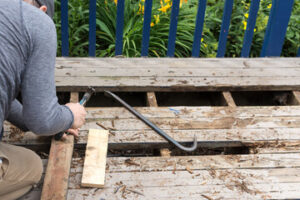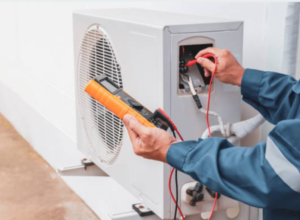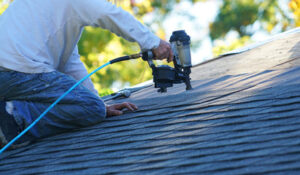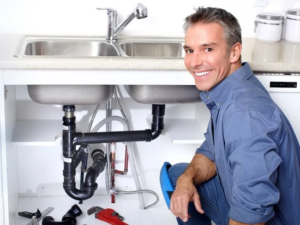Sustaining profit margins in the solar energy industry requires a well-rounded business strategy that prioritizes quality and value. It also involves avoiding short-term investments that can have long-lasting effects.

Look for Solar Companies Utah that offer a power-production guarantee and a lifetime equipment warranty. It is also important to find an installer with NABCEP-certified professionals on its team.
The upfront cost of a solar system varies by solar company, equipment and financing options. It is important to compare multiple quotes from different installers before selecting the best option for your home. You should also consider whether any discounts or promotions are available that could lower your costs.
The biggest financial incentive for solar energy is a federal tax credit, which can reduce the total cost of your system by 30%. This credit applies to those who purchase their systems with cash or with a loan, but not to those who lease or buy power through a PPA (power purchase agreement). This makes purchasing your solar energy system the most cost-effective option.
There are a few other ways to lower the cost of your solar installation, including taking advantage of state and local rebates, which can help offset initial investment. You may also be able to take advantage of a lower electricity rate through your local utility provider. Finally, if your roof is in an area with ample sunshine and high electric rates, you may be able to reap more savings through net energy metering, which allows homeowners to earn credits for the excess power their systems produce when production exceeds consumption.
Depending on your location and electricity usage, you can calculate how long it will take for your system to pay for itself through a simple formula. Start with the initial cost of the system, subtract any rebates, tax credits and other incentives you have received, then estimate how much you will save on your electricity bills each year. Divide your annual bill savings by the net system cost to determine the solar payback period in years.
Solar energy is one of the most affordable sources of power, and its cost continues to decline. In fact, a recent study by financial advisory firm Lazard found that solar is the cheapest form of electricity in some parts of the country. As technology advances, it will likely become even more cost-effective.
Energy Efficiency
Solar energy systems are an excellent way to save money on your electricity bills. In addition to the cost savings, they also reduce emissions of greenhouse gases, nitrogen oxides and particulate matter. Furthermore, they cut the need to import expensive oil, which can have serious environmental implications.
Solar companies can help you decide if solar power is right for you by conducting an energy audit. They can also guide you through the process of selecting a solar installation company and financing your system. They can also provide information about energy efficiency and incentives available to you.
A good solar company will have a proven track record and experience in the industry. They will provide you with an energy audit and a detailed quote of the costs of installing solar panels on your home or business. They will also give you an estimate of the amount of time it will take for the system to pay for itself in savings on your electricity bill.
The amount of energy that your solar system can generate depends on the size of your panels and how sunny your area is. However, you should remember that there are days in the year when the sun is not visible. This means that you should have adequate backups to ensure that you always have sufficient energy.
Solar panels convert 15-22% of the sun’s energy into usable electricity. This energy is not lost, and it can be stored in thermal mass systems with materials that have high specific heat capacities, such as stone, molten salts or paraffin wax. It can also be stored using pumped water systems or sent to the grid for storage in the event of peak demand.
Many states have programs that enable homeowners to sell their excess energy back to the utility grid. These programs, known as net metering or feed-in tariffs, allow homeowners to offset their energy costs by receiving credits on their electric bills for the power they produce. These programs are a great way to reduce your energy consumption and increase the value of your home or business.
Tax Credits
Solar energy systems are eligible for a number of state and federal tax credits, rebates and incentives to help reduce the upfront costs. For example, homeowners may be able to claim up to 30% of their system’s cost back on their taxes under the federal Investment Tax Credit (ITC), and they can also save through net metering and local utility incentives like rebates.
A well-rounded strategy that prioritizes value and quality over the need to be the cheapest commodity is the key to long-term success in the solar industry. By avoiding a narrow focus on pricing, solar companies can lower customer risk and foster enduring trust in the market.
The federal solar tax credit is a powerful tool that can significantly reduce the upfront cost of installing a system, making it easier to finance and pay for. Unlike deductions, which require that you itemize your expenses, the credit allows you to knock a percentage of your project’s cost right off the bottom line.
It’s available for homeowners who install their own rooftop solar systems and those who purchase a solar power-purchase agreement (PPA) or other similar contracts with a commercial solar company that sells electricity generated from a solar array to the homeowner. It’s also available to those who purchase or lease a solar energy storage system that provides backup power for their home.
Generally, other incentives like rebates from your local utility and/or the state don’t impact the federal credit. However, it’s important to talk to your tax professional before claiming any other financial assistance.
The ITC is set to expire at the end of 2034, so homeowners who are considering a solar installation should take advantage of this opportunity while it’s still available. To qualify, you must install a photovoltaic solar energy system at your primary residence (which can include a house, mobile home, co-op apartment or condominium) or purchase an interest in an off-site community solar project that provides electricity to your home.
If you’re looking for more information on the ITC and other state and local incentives, NerdWallet Taxes powered by Column Tax offers a comprehensive database of available rebates that can help you make smarter decisions about the solar options best for your home.
Maintenance
Solar photovoltaic systems have no moving parts and are relatively durable, but they still require regular maintenance to keep working at peak performance. This routine maintenance can identify potential problems, such as dirty panels or loose connections, and help homeowners catch them before they escalate into more costly repairs. It also helps ensure that solar energy systems are operating at their full potential, which leads to greater energy savings over time.
Solar companies that offer maintenance services typically include cleaning and system monitoring in their plans. Cleaning is important because dirt, dust and debris can build up on the surface of solar panels and obstruct light, which reduces power output. Regular cleanings prevent these contaminants from reducing solar energy production and extend the life of the system. Many companies also offer a monitoring service that tracks the solar panel energy output through a smartphone app or dashboard. This allows the company to spot any energy output drops and take corrective action.
The best solar companies also have a customer-centric business model and offer competitive pricing. They also have a strong track record of customer satisfaction and a high level of transparency in their products and services. Some have even partnered with leading banks to provide a financial package that can make switching to solar more affordable.
In addition to offering maintenance services, some of the top solar companies also offer a variety of other products and services related to the use of renewable energy. These include energy storage solutions, home battery packages and electric vehicle chargers. Some of these products are sold in conjunction with other renewable energy services, while others are offered as standalone options.
Before choosing a solar company, it’s important to do your research. Check online reviews, read the fine print of contracts and look for customer testimonials. Additionally, it’s a good idea to hire certified installers and electricians, who have the necessary knowledge and training to ensure the quality of their work.
The top-rated solar companies have a range of products and services to offer, from installation and financing to system monitoring and repair. They also have excellent equipment warranties, including guarantees on the panels, inverters and batteries they install.








